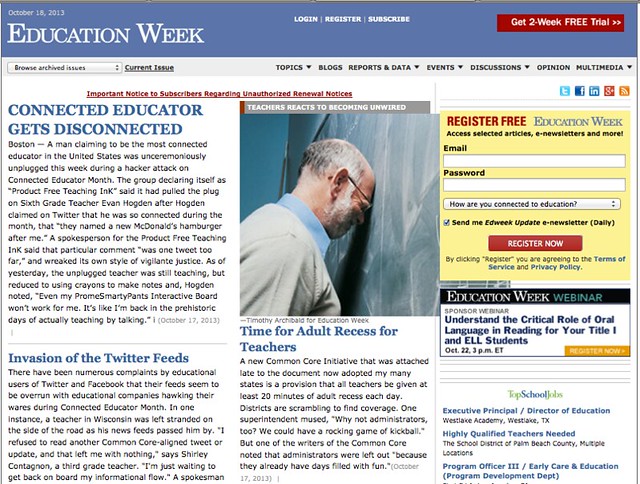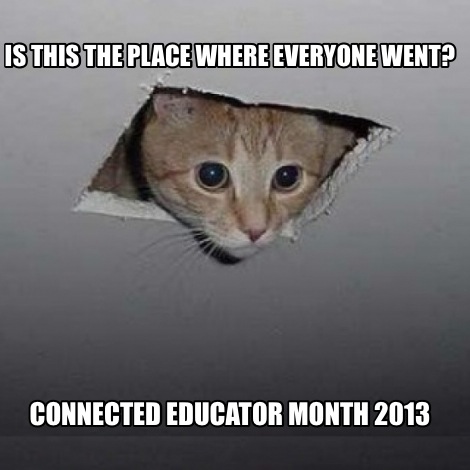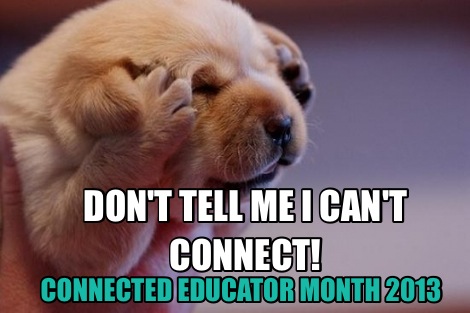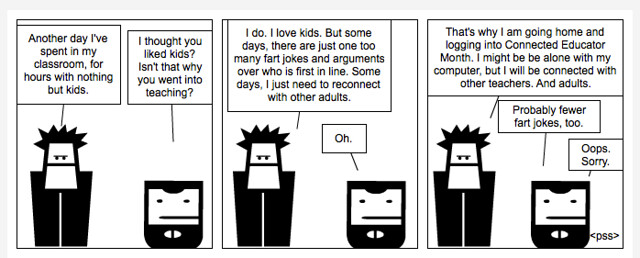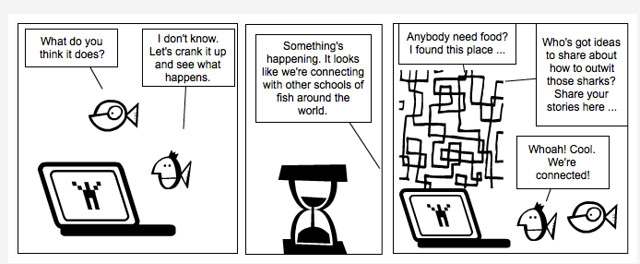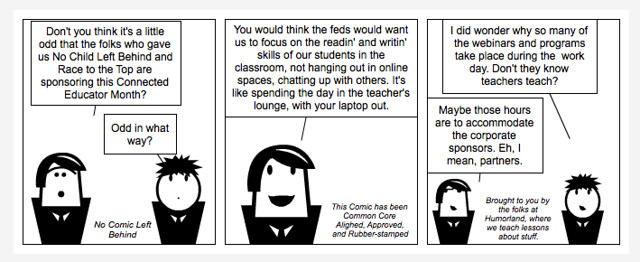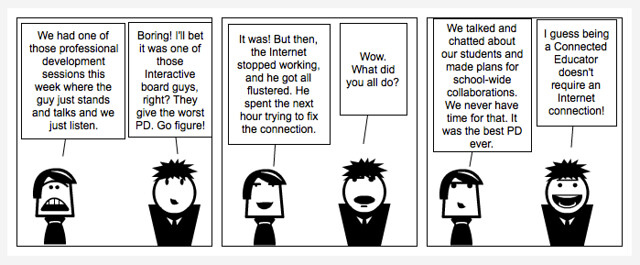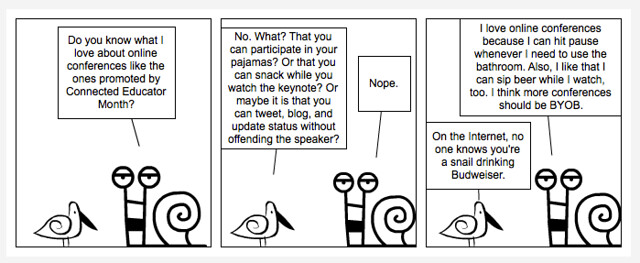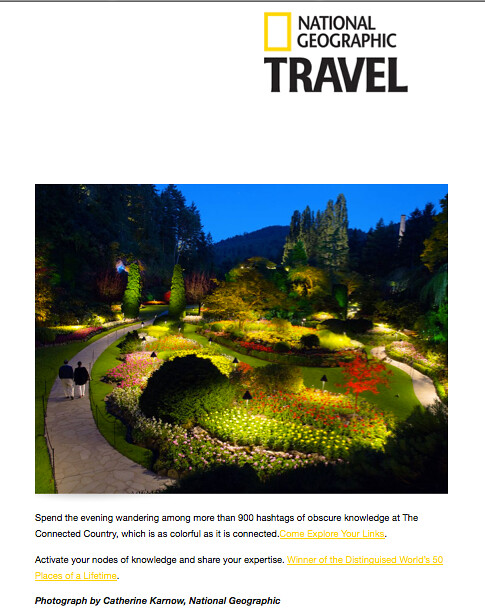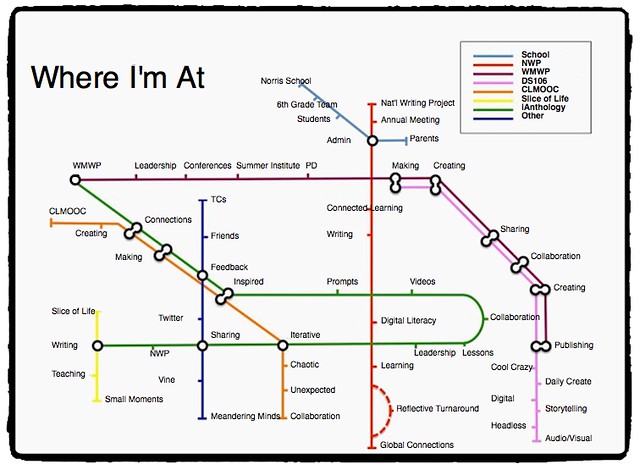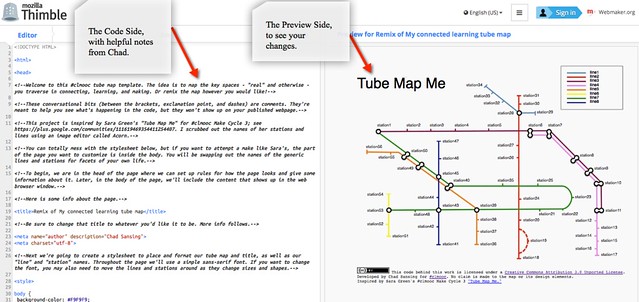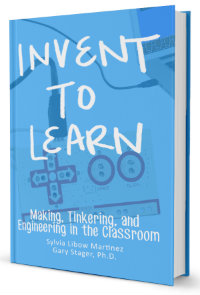
Over at MiddleWeb, I recently reviewed Invent to Learn: Making, Tinkering and Engineering in the Classroom by Sylvia Libow Martinez and Gary Stager and found it be such a great resource for wrapping one’s head around where to begin with the move to get kids making things again in a learning environment. (See my review).
But seeing how there will be a book club community around Invent to Learn for Connected Educators Month, I wanted to share out some passages, lines and quotes from the book that really stood out for me as I was reading it. I hope to find time to participate in the book club. We’ll see.
“The past few decades have been a dark time in many schools. Emphasis on high-stakes standardized testing, teaching to the test, de-professionalizing teachers, and depending on data rather than teacher expertise has created classrooms that are increasingly devoid of play, rich materials and the time to do projects.” – p. 1
My Response: Yep. And this shift towards numbers, instead of students, continues to grow by the day, particularly as administrators are forced to show accountability and growth in testing. There is no doubt that this move and shift has taken much creativity out of our classrooms. Mine, too.
“Making things and then make those things better is at the core of humanity.” – p. 11
My Response: Yep. We forget that the most precious times of our own learning are when we are forced to dive in and learn how to do something. We make mistakes. We break things along way. We curse. (or I do). And then, when something falls into place, there is that exhilaration of “I did it!” For me, this often has to do with plumbing and fixing something before calling in the expert. Maybe that’s just me, though. A fixed toilet is cause for major celebration in our household.
“The Maker ethos values learning through direct experience and the intellectual and social benefits that accrue from creating something shareable. Not only are there a plethora of high-tech materials available for childhood knowledge construction, but the growing popularity of making things has led to many ‘low tech’ innovations to spice up hands-on learning.” – p. 29
My Response: Yep. (Sorry. I took these quotes out because I agree with them). I like that low hurdles and low or not tech is part of the Maker Movement values. Access and equity are huge issues. And cost of supplies and technology often are a barrier to classroom Make projects.
“When we allow children to experiment, take risks, and play with their own ideas, we give them permission to trust themselves. They begin to see themselves as learners who have good ideas and can transform their own ideas into reality.” – p.36
My Response: And I would argue that this is true for any educational experience and environment. Or I would hope. But direct instruction, drill and kill skill work and teaching to the test through the year suck all the fun out of learning for so many of our young people. They don’t trust themselves anymore, it seems. They are reluctant to take chances on something new. To fail (the authors don’t like that work) and iterate/innovate (their preferred terms) is part of learning. It’s not the end of the path. It’s the start of a new path.
“Projects create memories for students. Those memories contain the skills and content learned during that project’s development. The best teachers are those who inspire memories in their students, and engaging students in great projects is a powerful way to do so.” – p.65
My Response: Ye.. oh, never mind. I agree that we want learning to extend beyond the classroom walls. Memories are powerful reminders of learning.
“Making things provides a powerful context for learning. An authentic, or real-world audience, for one’s work is a mighty motivator. As teachers, we often promote the idea that process is more important than the end product, yet it is often the product itself that provides context and motivates students to learn. Knowledge is a consequence of experience, and open-ended creativity tools expand opportunities for such knowledge construction.” – p.66
My Response: This idea of creating things for the world, for an audience, can be transformative in many ways. When we share our expertise, and when we teach others, we are learning even more deeper. That’s why so many teachers are such smart folks, right? And young people have a natural impulse to be part of the conversation with the world. (See the plethora of YouTube how-to videos).
“Re-using materials is consistent with kids’ passion for environmentalism and is an idea of the maker movement.” – p. 83
My Response: I had not really made that connections before. But this is so true. My students are passionate about the environment on many levels.
“Learning to program a computer is an act of intellectual mastery that empowers children and teaches them that they have control over a piece of powerful technology. Students quickly learn that they are the most important part of the computer program. The computer is really quite dumb unless you tell it what to do in a precise fashion the machine understands.” – p. 130
My Response: I suspect this is where we lose a lot of teachers. But we need to dive into these apps and programs that students can use, if only to get deeper into the technology and gain some agency over the devices of their lives. There are now a lot of simple ways to show programming skills and web-based skills. At the heart, though, it is us who are in charge, not the tools. (Although I know some might argue that point.) We control the power buttons.
“A funny thing happens when you make something, particularly something of a technological nature. You are inspired to learn something else.” p. 162
My Response: That is so true. Success breeds curiosity which breeds innovation which breeds success.
“Teachers should not be treated as imbeciles incapable of growth or felons who can’t be trusted to show a YouTube video in class.” p. 199
My Response: Can we bulk email this to every school administrator in the country? Tape it up on the walls above the desks of the informational technology officers of every school district? Please?
What do you think?
Peace (in the make),
Kevin
